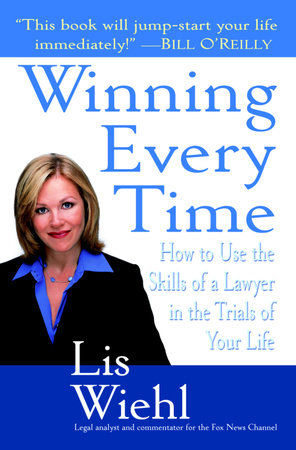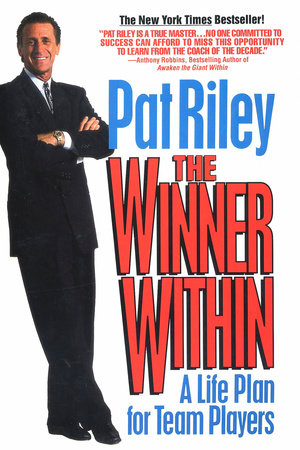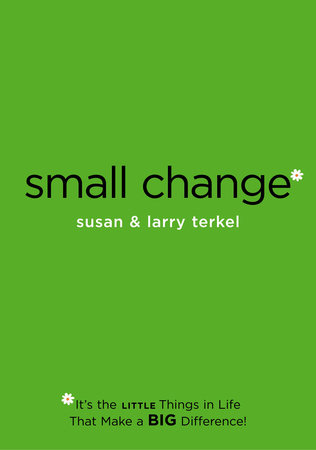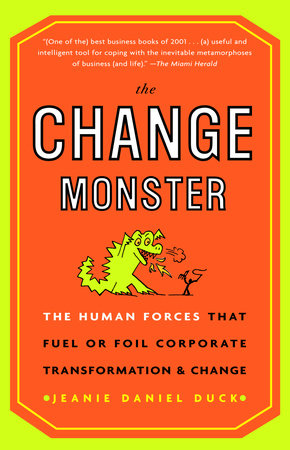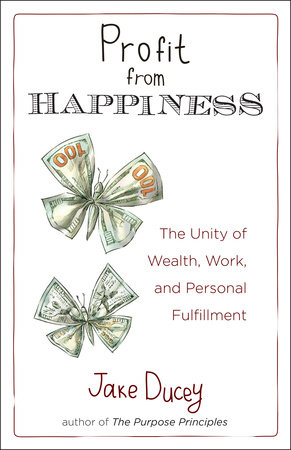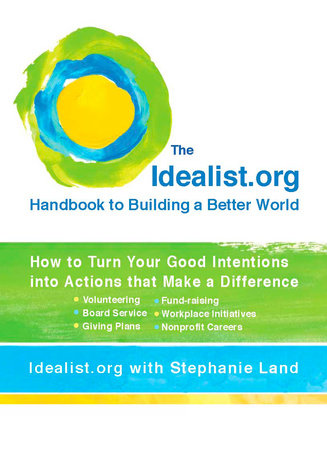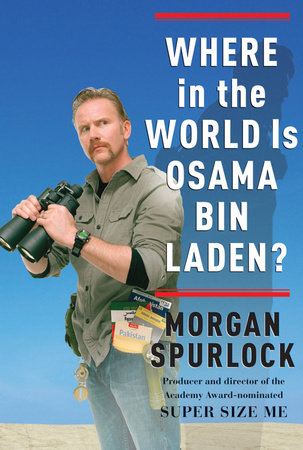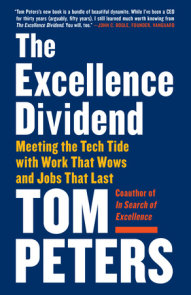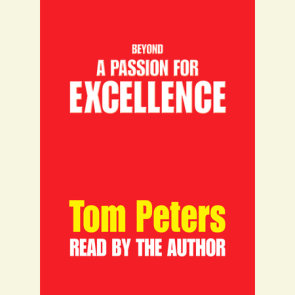Author Q&A
Q: Why is downsizing taking off like crazy and what are some of its pitfalls, i.e., why can’t you shrink your way to greatness?
A: After 15 years of downsizingre-engineeringright-sizing firms are still far too fat. Organizations like Wal-Mart and Dell Computer have created entirely new ways of business . . . for which their competitors are not ready. So I am a (very) reluctant fan of re-engineeringdownsizing. On the other hand, one can–and often does–do it wrong. That is, cut muscle instead of flab. And in the long run, business is about the top-line. Cost competitiveness and agility (lean and mean) are prerequisites for modern day success. But in the long haul . . . IT’S INNOVATION, STUPID. Innovation = Top-line obsession.
Q: Why are there so many business books on Total Quality Management, Teams, and Re-engineering but so few on Innovation?
A: The honest answer: I don’t know. Maybe it’s our old-fashioned (relatively new-fashioned, in fact) MBA-bias toward so-called "hard stuff." Total Quality Management is a by-the-numbers activity. So, too, re-engineering. But innovation? I am a great fan of the Nobel Laureate in Economics, F. A. Hayek. His message: The mess is the message. Innovation is about lots of tries, crazies, diversity, fooling around, taking bold risks. It’s daunting work. And hard to capture in a linear-text form . . . which, incidentally, is why we’ve gone to the more energetic format in The Circle of Innovation.
Q: You argue that spin-offs are better than mergers, yet we seem to be witnessing the era of the BIG merger–almost to a point of absurdity. Are companies on the wrong track?
A: "Almost" to a point of absurdity? Forget the almost. It is absurd. I developed a three-slide set recently: QUESTION: What do you do if you are a big, dopey company, heading nowhere? ANSWER: Merge with another big, dopey company going nowhere. RESULT: An incredibly big, incredibly dopey company going absolutely nowhere.
My slide set gets lots of laughs. But there’s nothing funny about it. Put together a Bell Atlantic and a Nynex and what do you have . . . an incredibly big, incredibly clumsy telecommunications firm. Peter Job, CEO of the information services giant Reuters, says that such mergers are about buying market share. His answer: Create new markets, the antithesis of the big merger route. I’m not against acquisitions. In Silicon Valley, the fastest growing large company is Cisco Systems, maker of much of the "plumbing" to the Internet. Forty-five percent of Cisco’s revenue comes from acquisitions. But those acquisitions are, almost without exception, tiny. Cisco buys ideas . . . and clever people. That is, smallish companies with a new approach to doing business. And that’s fine with me. As to my argument about spin-offs . . . it’s just plain, cold facts: Spun-off bits of large companies, when taken public and set on their own, are outperforming themselves in their prior lives . . . and the parents who spun them off. As I said: plain, cold, hard facts. Why aren’t we listening? God alone knows. I guess it’s simpler to stick two big uglies together . . . and call it progress.
Q: If you look at the sheer brain power and innovations coming out of Silicon Valley it’s astounding. What’s going on there? Something in the water?
A: What’s in the water is . . . Critical Mess. It’s a mess. A wonderful, madcap, productive mess. There’s a lot of academic stuff–Stanford, Berkeley, UCSF with its biotechnological excellence. A lot of financial stuff . . . a ridiculously high share of risk-oriented venture capitalists. And a lot of populist stuff . . . sandaled Steve Jobs of Apple is a product of the Haight-Ashbury mentality . . . and it’s not coincidence that Silicon Valley is leading with populist products (the microprocessor for the PC, software for all). The story is a long one . . . but it amounts to an unfair share of half insane dreamers in pursuit of the Next Big Thing . . . a shocking tolerance for failure (failures are inevitable and natural). Life . . . and business . . . are a game . . . are fun . . . and, hey, we just happen to be reinventing civilization in the process. Turns out there’s a lot of stuff in that water!
Q: You say that one of the biggest challenges facing corporations isn’t learning but forgetting–letting go of old ideas–how do you teach people to forget? Can you give us examples of companies that have mastered this technique?
A: Teaching people to forget is extremely difficult. We are all extraordinary creatures of habit . . . about the most trivial things, let alone the more profound ones. The trick is continually tossing people in over their head, putting them on new projects with new people in which they have to explore new ways of doing things, new areas of competence. Traditional professional service firms are pretty good at this . . . life is a constant diet of new projects with new people in pursuit of new solutions for new companies from new industries. That professional service firm "model" is one that I strongly urge (in the book) that every staff department adopt. The best companies use techniques such as rapid prototyping (described in the book . . . Sony, Hewlett-Packard, 3M are masters at this). They also follow techniques of extreme decentralization, a la Johnson & Johnson. Truth of the matter, though: We are just beginning to play with this profoundly important (particularly in the ‘nineties and beyond) topic of forgetting per se. There are no experts. There is no good body of literature as far as I know. And few examples of companies who are brilliant at it. That will–must!–change. I’m just glad to be part of that process.
Q: You believe that the primary strategy for virtually every industry should be to empower customers. How do you do that?
A: Don’t ask me . . . ask Charles Schwab. Schwab has reinvented the enormous brokerage industry . . . in the space of a few years. The strategy: giving "it" away. That is, customers are now managing their own financial affairs to an unprecedented degree . . . with access to information that was previously reserved for "sophisticated" financial professionals only. Likewise . . . FedEx has allowed us to book our own shipments . . . and track the goods . . . moment to moment . . . from here to there. Oracle president Ray Lane says such a shift to self service will accelerate in the future. People want to take charge of their destiny. New tools are enabling them to do just that. And the wise (read . . . revolutionary) companies are buying the act. I say "revolutionary" because how strange it was to see Netscape wedging its way into the market a couple of years ago against mighty Microsoft . . . by giving its browsers away. And then Microsoft fighting back by . . . giving its browsers away.
Q: How do you turn every "job" into a "project" and what’s the difference?
A: The model for tomorrow’s organizations is today’s knowledgeware stars, I contend. That is, the professional service firms such as the accountancies, ad agencies, consultancies, design and architecture firms. In those organizations life is about clients and projects. It’s about creating special value with life-nuggets (projects!) that define who you are as a professional. Although this approach may be instinctive to the professional service denizen, I find that it’s antithetical to normal practice in the average department . . . where most of life is a series of rote tasks performed according to Whole . . . with little concern for the specific client and unique ways of adding value.
Q: You write, "Organizations as we have known them for hundreds of years are disappearing. Literally." What is the organization of the future going to look like?
A: Honest answer: God alone knows! Maybe Dell Computer. It zapped Apple . . . which had just finished zapping IBM. Dell is shockingly flat, shockingly fast . . . a so-called "network" organization. Or take Sears vs. Wal-Mart: All you need is a couple of snapshots. Sears lived, until recently, in a 100-story tower on the shores of Lake Michigan. Perfect metaphor for the organization: a hundred levels of bureaucrats stacked one on top of the other. Wal-Mart, to this day, runs its business out of a nondescript couple-of-story building in Bentonville, Arkansas. That "flat" building is, also, a perfect metaphor for its organization. Flat is one watchword. Virtual is another. Sounds like biz-babble, and it can be . . . but it’s also profound: We will no longer "own" things (including people!) but will create temporary networks to execute projects. Hint: Hollywood has always known this . . . and made a ton of money . . . including export money . . . in the process. New models: Hollywood, professional service firms (again), construction companies.
Q: One of your goals is to alter the language we use to talk about business, to incorporate words like "beauty" and "grace." What are the key words people will speak in businesses of the future?
A: Have you got an hour? At the end of each of our 15 chapters in The Circle of Innovation, we have a brief section called "Semantics Alert." The reason: I am unabashedly pursuing change of language. Let’s take just a couple of examples. How about the word "talent"? I contend (and I hope I demonstrate in the book!) that "talent" is very different from "employee." Talent is about Hollywood . . . the Chicago Bulls . . . the creative department in the ad agency . . . the architecture office . . . the law firm. Talent "is all there is" in these enterprises. It’s not interchangeable. It’s kinky and quirky to some extent . . . and we depend upon that for value added. Think "talent" and you’re not thinking like the typical "HR" (human resources) exec. Another word: destruction. I talk about C.D.O. . . . chief destruction officer. I contend that "destruction" is a step beyond decentralization. The watchword today: Blow it up before the competition does. We’ve watched the Sears’s, the IBM’s, the GM’s, the Kodak’s come under incredible attack . . . often from upstarts. Their goal: Blow it up. Fast. Destruction, I think, is exactly the right word. And yet another: forgetting. Learning organizations are the rage. My advice: Think about a Forgetting Organization. It’s much tougher to figure out how to forget things . . . than it is to stick a new idea into your head. This is typical of the sorts of mind games that I am purposefully playing throughout the book. (Hint: I hope it works!)
Q: What does a company do to create "waves of lust"?
A: The whole premise of the book is that we are caught in a Sea of Saneness. Everything works. Product development cycles are a lot shorter. You can get good products from Mexico . . . and China . . . and India . . . and Indonesia . . . not just from Switzerland, Sweden, Germany, Japan, the United States. So we have to look for the next act. The next act means stepping out and standing out . . . understanding how Rubbermaid can be the most admired corporation in America (according to Fortune) in 1994 and 1995 . . . selling $1.95 rubber and plastic doodads. We have to learn why Judy George is the chief of the rare, fast-growing and successful home furnishings chain, Domain, because she seeks to sell "dreams," not "furniture." (Hint: I know her. I’ve researched the company. She’s serious. It’s working. And it’s the antithesis of the old-white-male-dominated furniture industry.) As to waves of lust per se . . . it’s a term I stole from Intel chief executive officer Andy Grove . . . it’s what he says his high-tech company is trying to do. In short (as we say it in the book . . . over . . . and over . . . and over): JUST SAY NO TO THE COMMODITIZATION OF ANYTHING AND EVERYTHING!
Q: You cite Tommy Hilfiger as a company that has mastered the art of branding. Why is branding so important these days and how do companies–big and tiny–do it?
A: There is that Sea of Saneness (see above). And as a result marketers said for years that brand loyalty was dying . . . perhaps dead. And yet what we’re really faced with is message overload. And so the issue becomes how do you stand out . . . way out, if possible . . . from the crowd. Coke knows (selling sugar water). Nike knows. Starbucks knows. Martha Stewart knows. (God knows!) The answer: off the wall, incredibly powerful branding. Focusing on what the product stands for. Pushing it like the devil in the marketplace. Hey, Intel did it . . . in the high-tech world . . . with that silly little circle (Intel Inside) . . . which makes it one of the most recognized brands around . . . for a product that nobody has seen (almost literally). As to how it’s done . . . I really don’t offer any magic elixirs. The folks who know–Body Shop’s Anita Roddick, Virgin Group’s Richard Branson–live it. That’s the Tommy Hilfiger message. Live it.
Obsess on it. Turn everything into an opportunity to hustle the brand, the image, the feel, the look, the experience.
Q: As you clearly believe, BUSINESS SHOULD BE FUN. Do you think most business people would find this a strange idea? Is innovation the key to actually making our jobs more enjoyable?
A: Sad to say . . . no, tragic to say . . . most business people would find it a strange idea. At the top. At the middle. (Just look at the number of Dilbert readers!) And I think it’s such a shame. Business, after all, is where we spend most of our waking hours. To have it be drab, dreary, lifeless . . . should be a Federal crime. And, yes, I do think innovation is the key. That is, to fully appreciate innovation is to fully appreciate diversity, to liberate people to "achieve their own greatness" (in the words of leadership guru Warren Bennis). Pursuing innovation is to pursue spunky work places. To promote people who love to develop people (bosses who resemble the extraordinary third grade teacher, that is). You’ll never eliminate all the B.S. in business. You won’t eliminate all the sucking up, even in the flattest of organizations. I’m 55 . . . and far too old to believe in the tooth fairy. But I do believe that this new world economic order demands innovation from each of us, demands that we take our lives back from our companies . . . and become chief executive officers of Me Inc. . . . a one-person professional service firm that may (for the moment) be embedded in General Electric or General Mills. But it’s our life. Our business. Growth is our only ticket to economic salvation. Growth can (and should) be fun. Why not?



